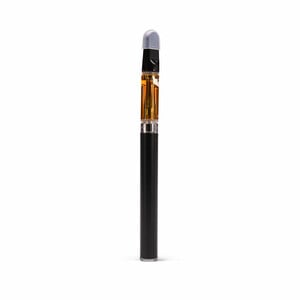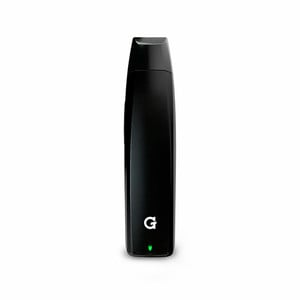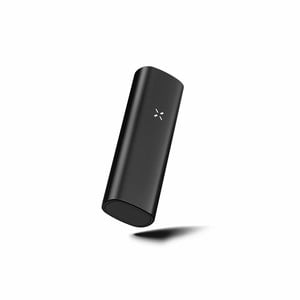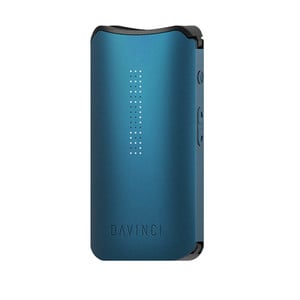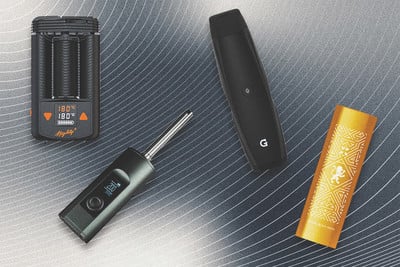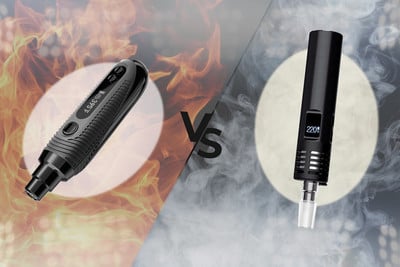.

Can Vapes Trigger Smoke Alarms?
Vaping, especially among the young, is becoming wildly popular. Once something you could do practically anywhere, it is becoming more and more restricted. Here, find out all you need to know about cannabis vapour and fire alarms.
Contents:
Smoke and fire alarms are found in almost all buildings—and with good reason! Though annoying when they go off by accident, they save lives when they go off at the right time. But with the advent of vaping (now in its teenage years), you might wonder: will vape smoke set off a fire alarm?
Well, it depends on what kind of alarms are around you. In this article, we explain different types of fire alarms, and ask if and when vaping can set off a smoke alarm. Keep reading to find out all about it.
How Do Smoke Alarms Work?
Smoke alarms or fire alarms work by detecting changes in the environment. Either they detect particulate matter in the air, or detect changes in temperature. Depending on the environment in which they are installed, different types of alarms are more or less suitable.


Types of Smoke Alarms
Below, find an overview of the main types of smoke alarms.
-
Ionisation Alarms
Ionisation smoke alarms detect smoke by detecting ions in the air. When smoke particles enter the chamber of the smoke alarm, they change the electrical conductivity within, indicating the presence of smoke (or other particles)—this then triggers the alarm.
Of the more traditional types of smoke alarms, these are the most likely to be triggered by vapour.
-
Particulate Sensors
These smoke alarms use infrared light to detect smoke. Much like burglar alarms, they emit infrared light towards a sensor, and when the light is blocked and the sensor no longer detects IR light, the alarm is triggered. Smoke is enough to block this light.
Vapour can trigger particulate sensor alarms, but there must be high quantities—it is unusual.
-
Gas Sensors
These use a range of different techniques to detect toxic and flammable gases and/or oxygen depletion. It is unlikely that gas sensors will be triggered by vapour.
-
Combination Sensors
These generally combine some kind of smoke sensor with a gas sensor, meaning that a single alarm can detect multiple dangers. While these are simple, they are not always favoured as smoke tends to rise whereas carbon monoxide diffuses evenly throughout the room, meaning that, ideally, the sensors would not be in the same place.
-
Heat Sensors
Heat sensors are generally found in kitchens where smoke is likely under normal circumstances and would trigger smoke alarms. As such, these will trigger once the temperature rises to an unusual level, indicating fire.
Do Vape Alarms Exist?
These days, as classic smoke alarms are not particularly good at detecting vapour, environmental sensors that detect both vapour and smoke have been developed. These are increasingly common in public buildings such as schools, universities, hospitals, and trains.
With the rise of vaping, including vaping cannabis, institutions instal these to deter indoor vaping. They are likely to be found in private spaces such as toilets, where people may try to secretly vape.
Vapour particles are smaller than smoke, so specialist environmental sensors are necessary to detect them. And in case you’re wondering, they are specifically designed to detect THC-containing vapour as well as nicotine-containing vapour, in an effort to deter drug use.
Often, these sensors work using what’s known as the vape index. Using multiple sensors, this measures vapour in the air—from 1 to 100. When the level surpasses a certain threshold, the alarm triggers.
Another important factor to be aware of is that, as vapour does not indicate a fire, these alarms do not audibly trigger, as they need not warn everyone of danger. Instead, they often send an alert to whoever is responsible for building security.
Convection vs Conduction Vaporizers: Do They Affect Detectors Differently?
It may be that because convection vapes operate at lower temperatures, they are less likely to trigger alarms. Lower temperatures mean less vapour, which means a lower score on the vape index.
However, these alarms are well-designed, and you shouldn’t bet your safety on the fact that you’re using a convection vape!
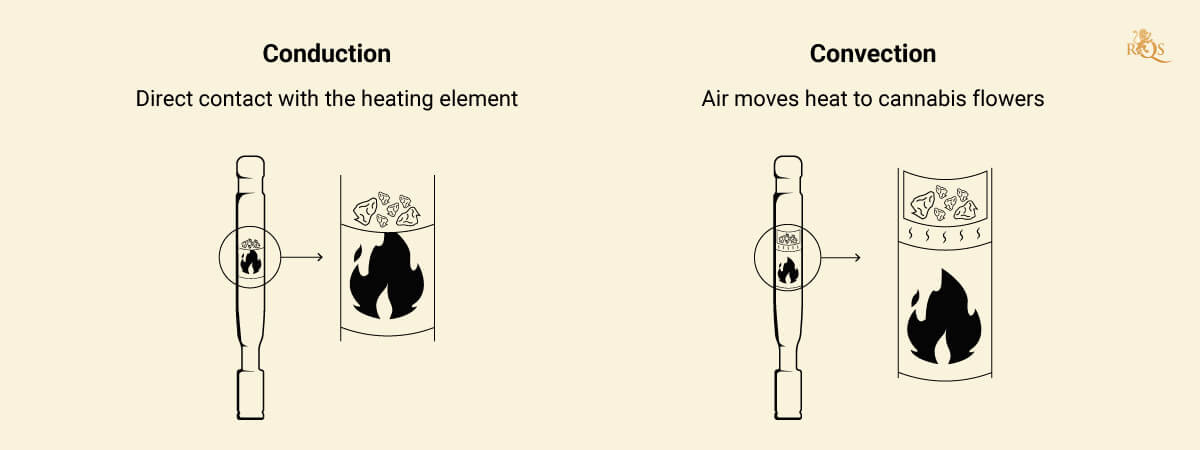
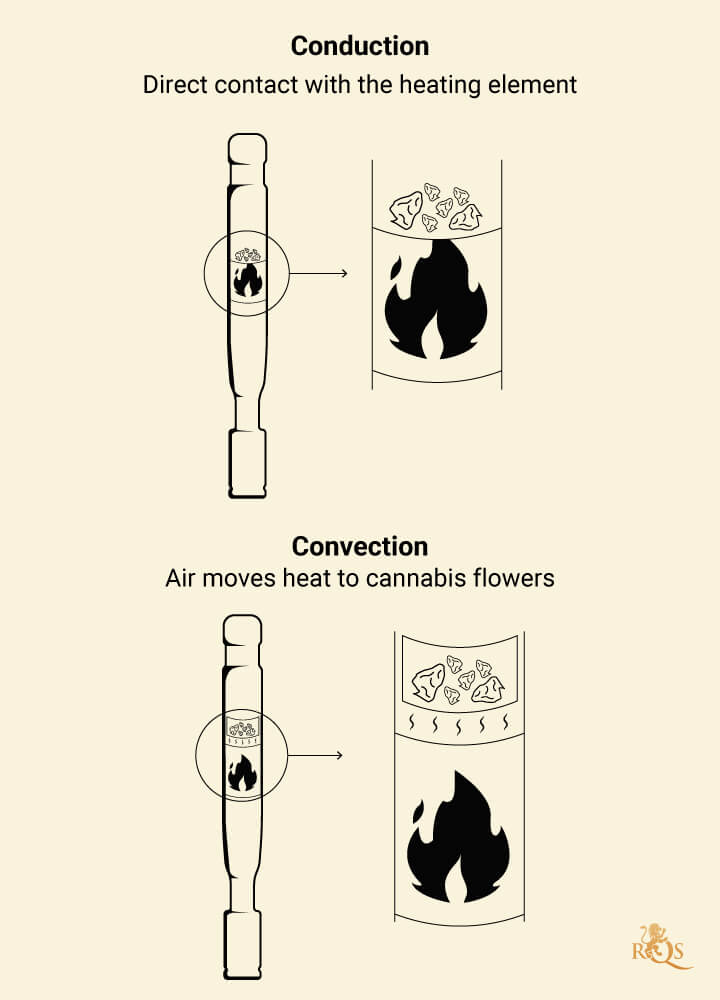
Best Vaporizers for Discreet Vaping
Keeping the above in mind, here’s a list of our favourite conduction and convection vapes, all of which offer the necessary control to vape at low temperatures, helping to avoid detection!
CBD Vape Pen
Worried about setting off smoke alarms? The CBD Vape Pen produces light, clean vapour instead of dense clouds, minimising the risk of triggering alarms. Perfect for low-profile sessions in shared spaces.
G Pen Elite
This affordable, portable convection vape is a great choice. Designed for dry herb, it has a large ceramic chamber and many different temperature options, allowing for a custom vape style and minimal vapour, helping you to vape discreetly!
G Pen Elite II Vaporizer
|
|
Conduction & Convection |
|
|
23 x 3.1 x 10.8 cm |
|
|
120 gr |
|
|
200° – 428° F / 93º – 220º C |
|
|
30 - 60 sec |
|
|
0,5 gr |
|
|
Manual |
|
|
Dry Herbs |
PAX Mini
The PAX Mini is the little sibling of the PAX range. This vape is tiny but packs a punch, and it has a conduction chamber designed for herbs and concentrates. However, despite its size catering to stealth users, it has limited customisation options, meaning you can’t vape at super low temperatures.
PAX Mini Vaporizer
|
|
Conduction |
|
|
3,1 x 2,2 x 9,3 cm |
|
|
89 gr |
|
|
190 - 215°C / 374 - 420°F |
|
|
22 sec |
|
|
0,25 gr |
|
|
Digital & manual |
|
|
Dry Herbs |
DaVinci IQC
This conduction vape has two chambers, meaning you can pack dry herbs and concentrates all at once! Pocket-sized and sleek, this vape is sexy and pleasing to the eye. With simple buttons on the side that allow you to easily adjust the temperature, it is a good option for those who desire customisability.
DaVinci IQC
|
|
Conduction |
|
|
4,5 x 9,2 x 2.5 cm |
|
|
159 gr |
|
|
0°C - 221°C / 32°F - 430°F |
|
|
30 sec |
|
|
0,5 gr |
|
|
Digital, Manual |
|
|
Dry Herbs |
How to Avoid Setting Off the Smoke Alarm When Vaping

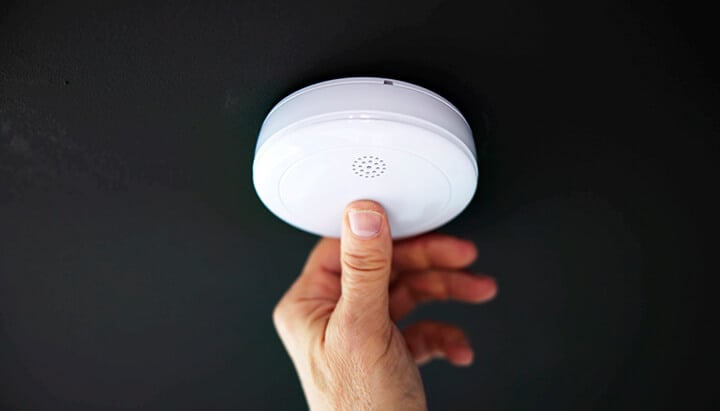
If you’re vaping in a public space, it’s best to go outside or to places where you are certain there aren’t alarms. This is especially true if you’re vaping cannabis, as it could land you in serious trouble if you’re caught.
Moreover, never try to tamper with fire alarms. Primarily, they also detect smoke, so damaging a fire alarm could put others at risk. What’s more, they often have anti-tamper technology and will alert security if they detect foul play.
But if you’re vaping at home and your alarm is annoying you, there are a few steps you can take.
- Disconnect your alarm: Some alarms can be disconnected or turned off—others will trigger if they are removed from the ceiling. Disconnecting alarms carries the inherent risk that you forget to reconnect them, fall asleep, and a fire starts. While unlikely, it is possible.
- Ventilation: If you vape in a ventilated space, the chances of triggering a smoke alarm are very slim. Open some windows and doors.
- Move away from the alarm: Unless you’re vaping directly beneath a smoke alarm, it really shouldn't be triggered by vapour. As long as you’re a little distant from it, everything will probably be okay.
Vaping and Alarms: Technology Is Catching Up!
In enclosed public spaces, there is a good chance that any alarms will be able to detect vapour, and you might not be able to tell if you’ve triggered them! Therefore, it’s best to not try to outsmart them, and instead, just vape outdoors or where you know you’re not going to set an alarm off.
If vaping at home and you have a generic smoke/fire alarm, it’s unlikely that vaping will trigger it, and you should be good so long as you’re not directly beneath it.


























